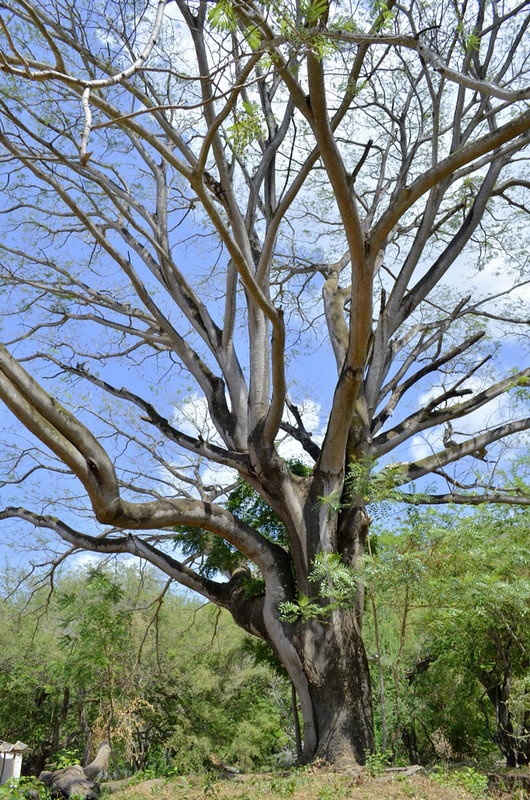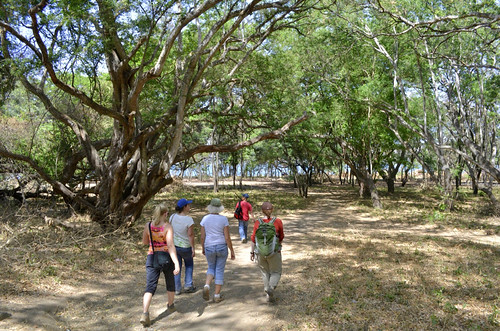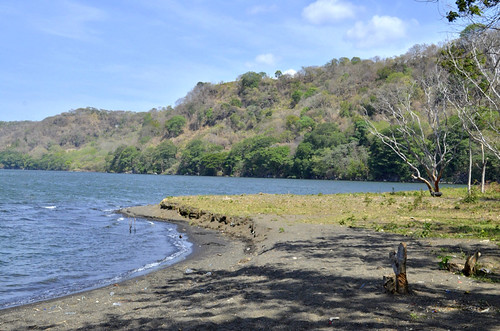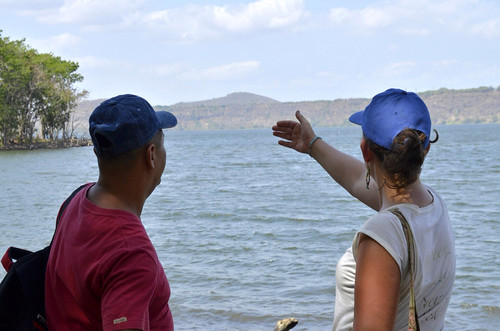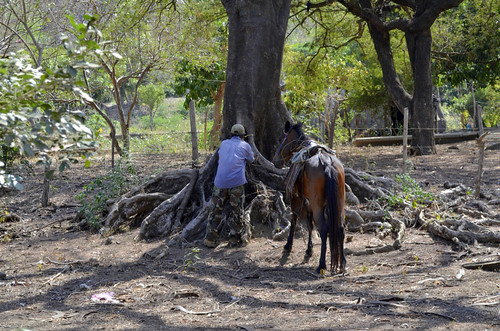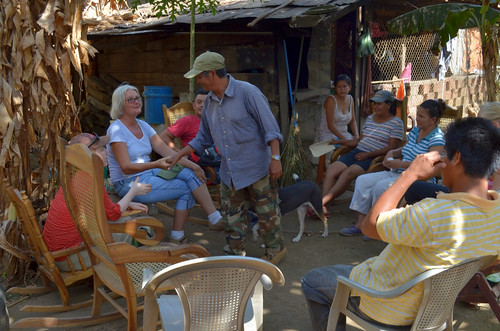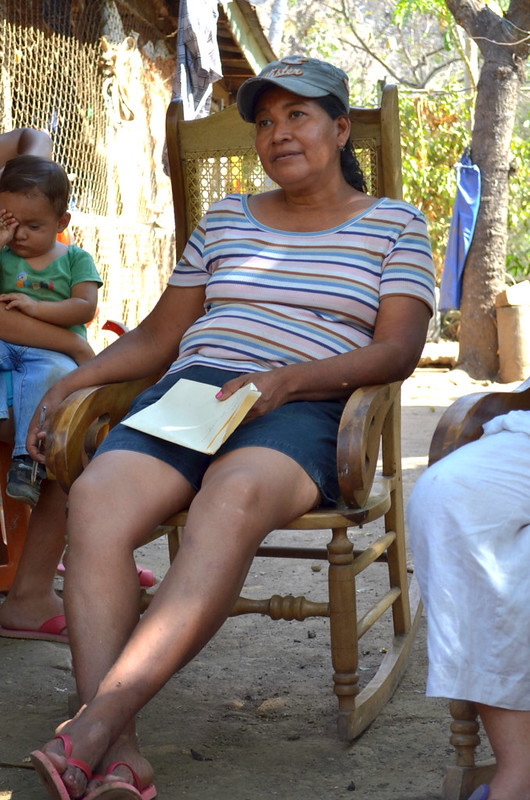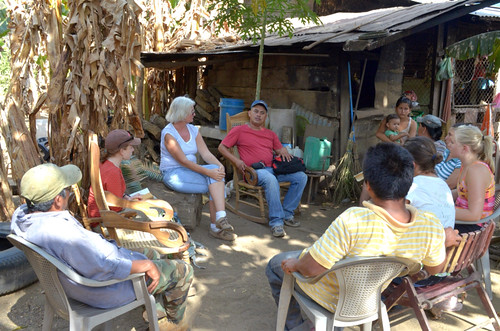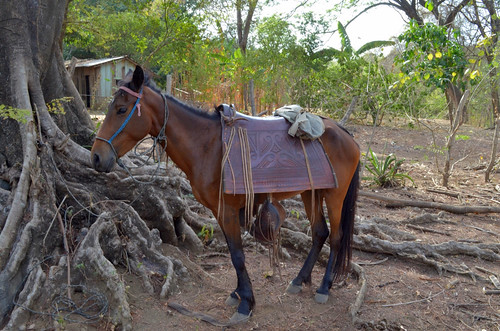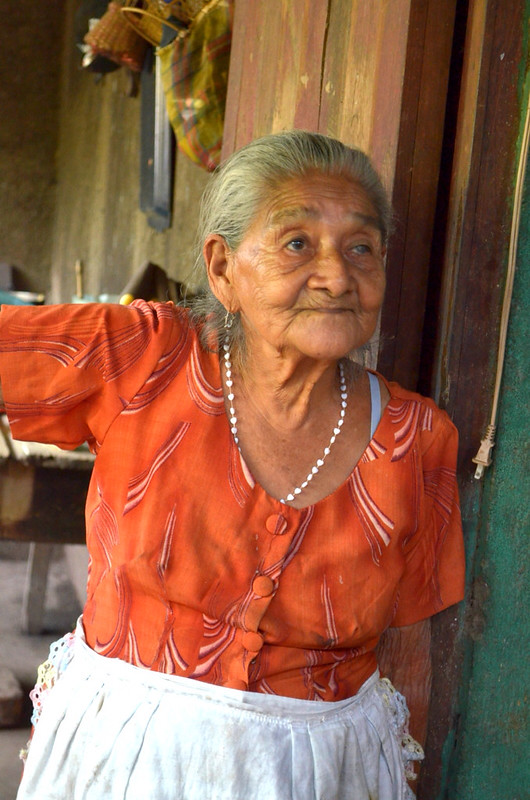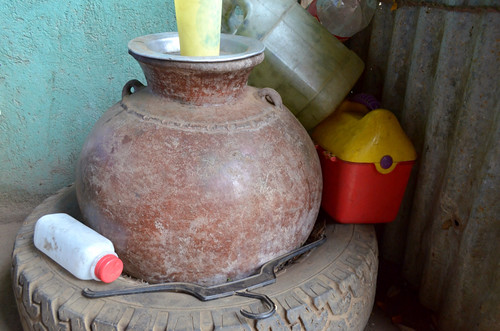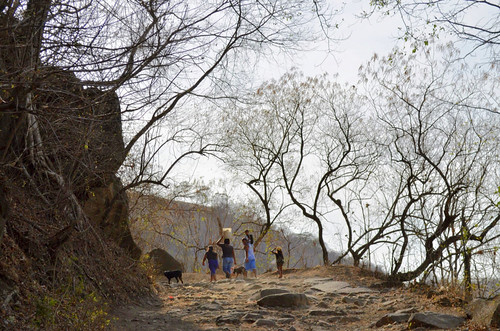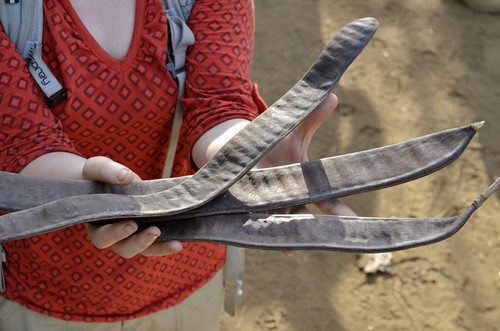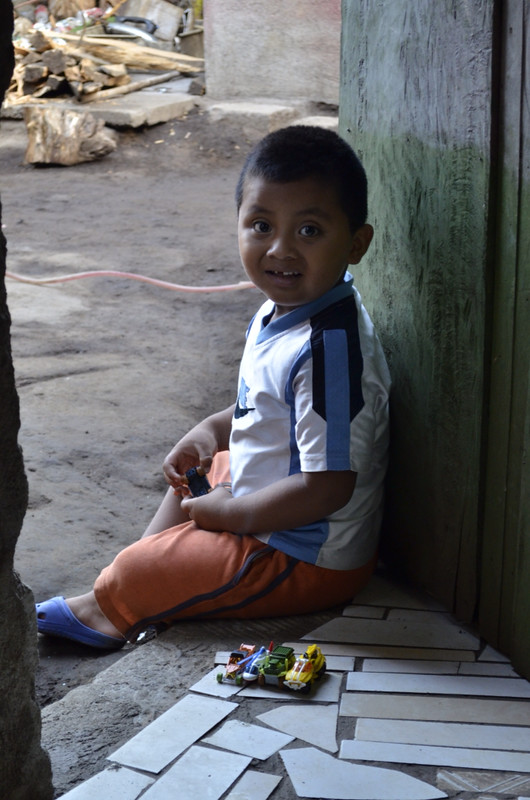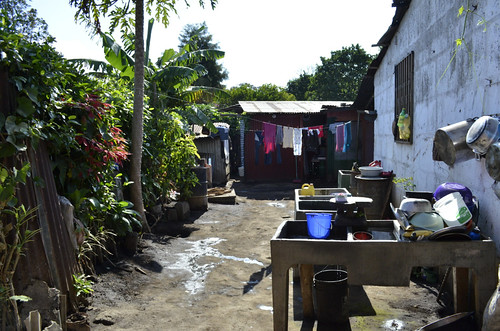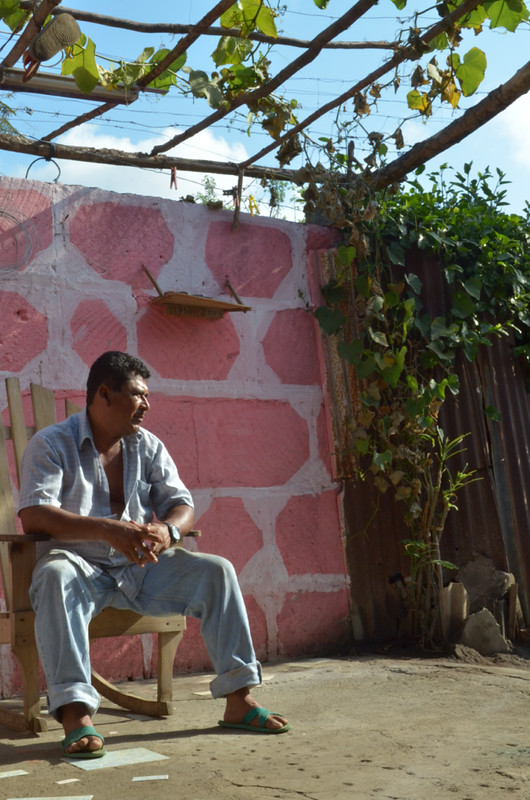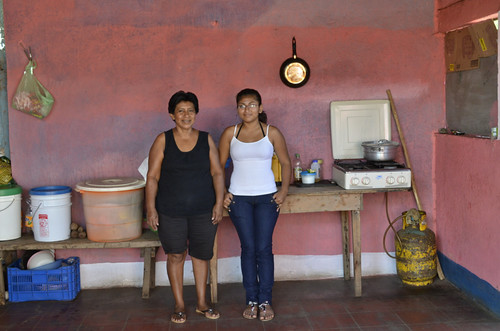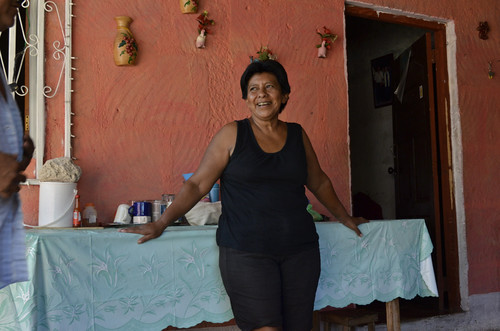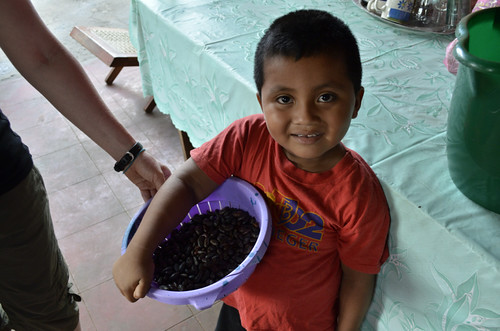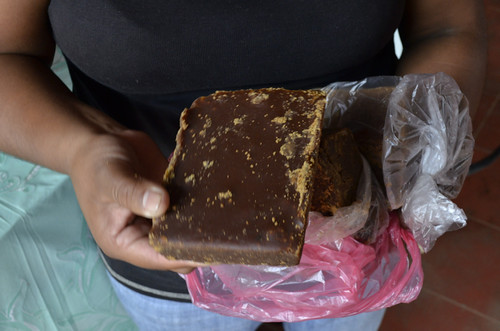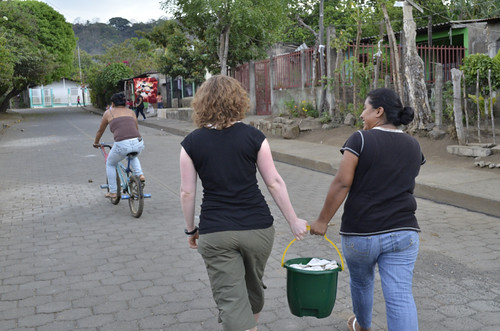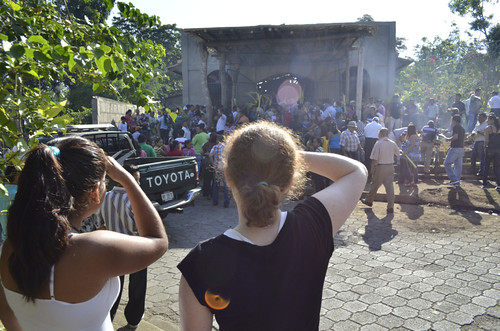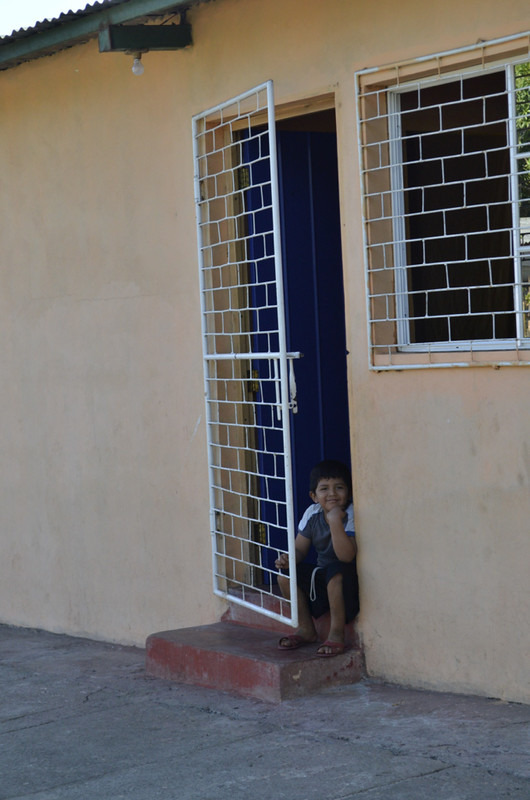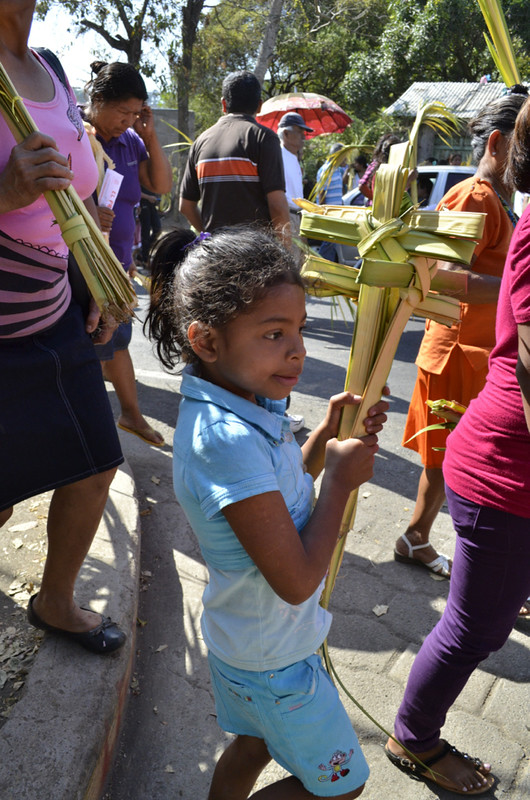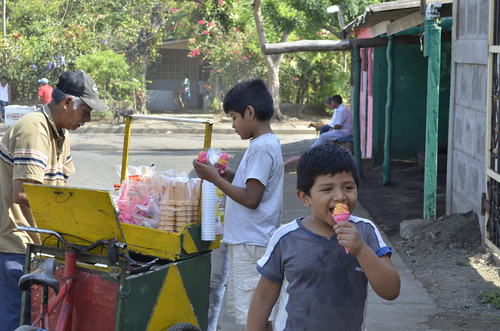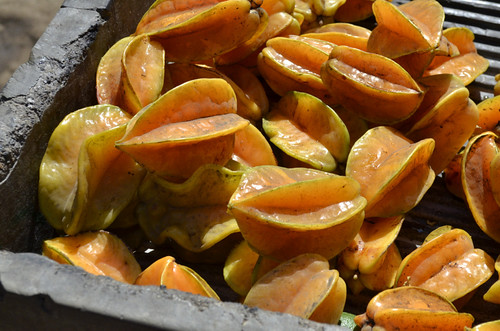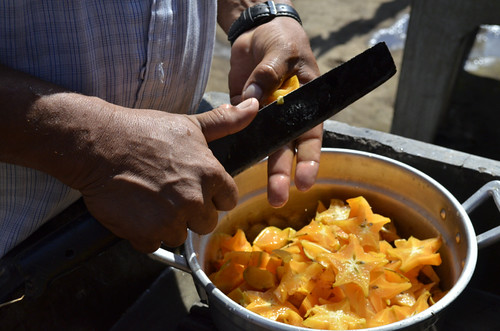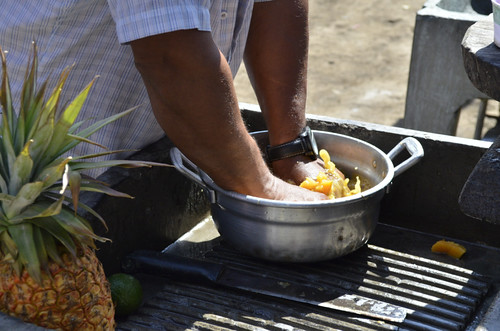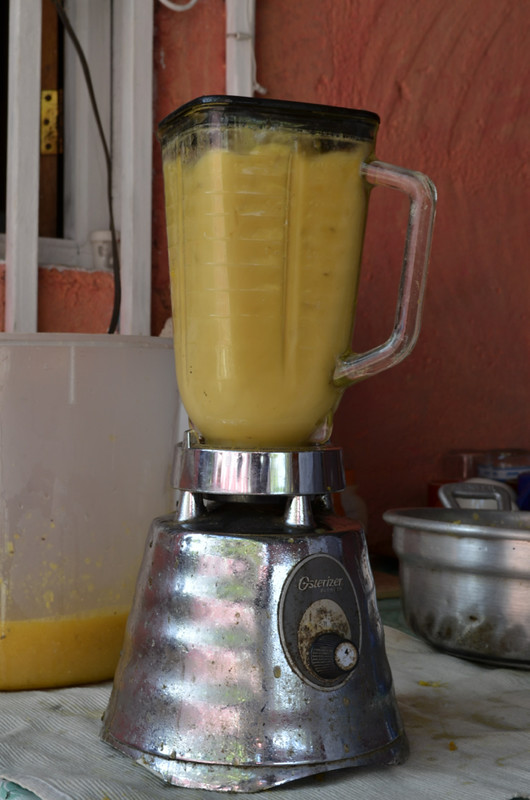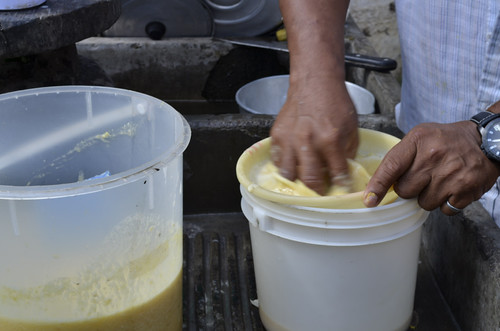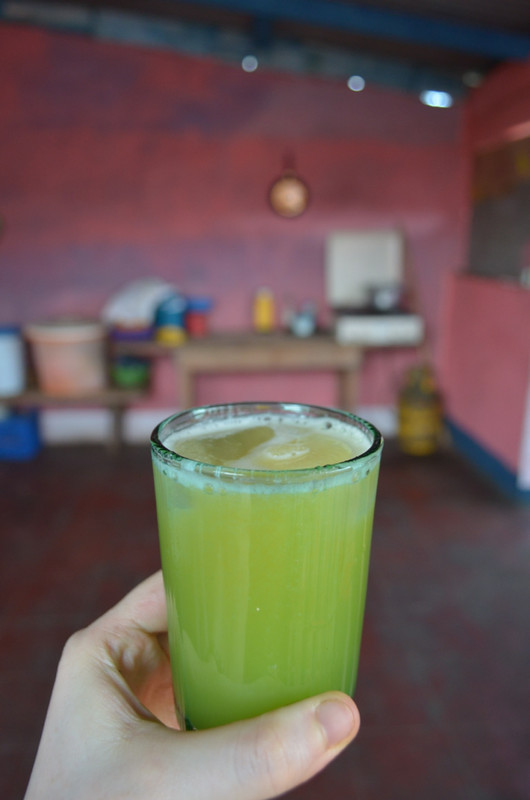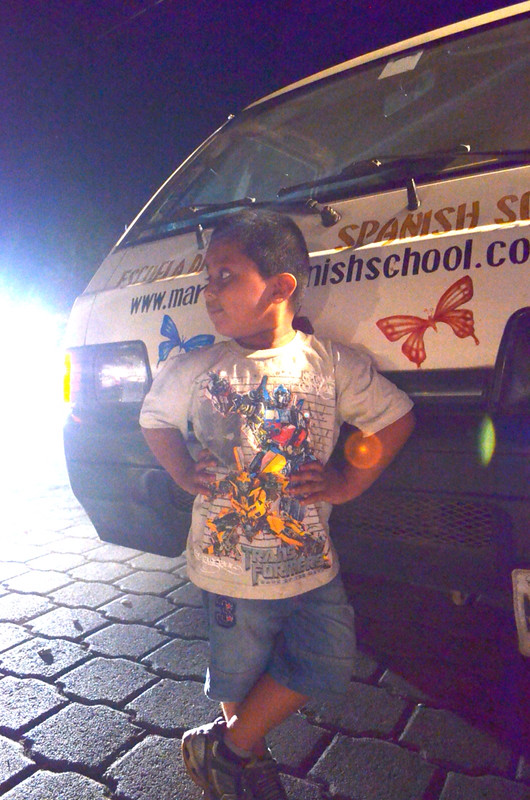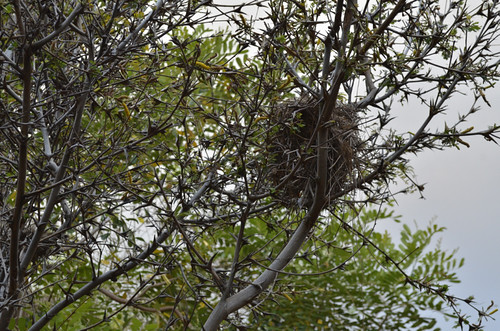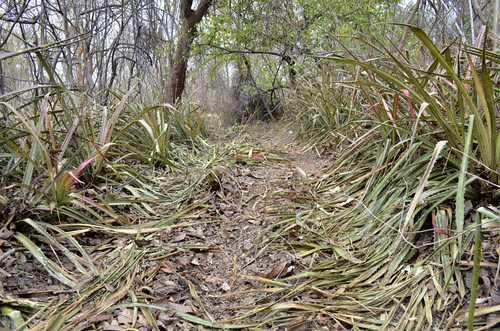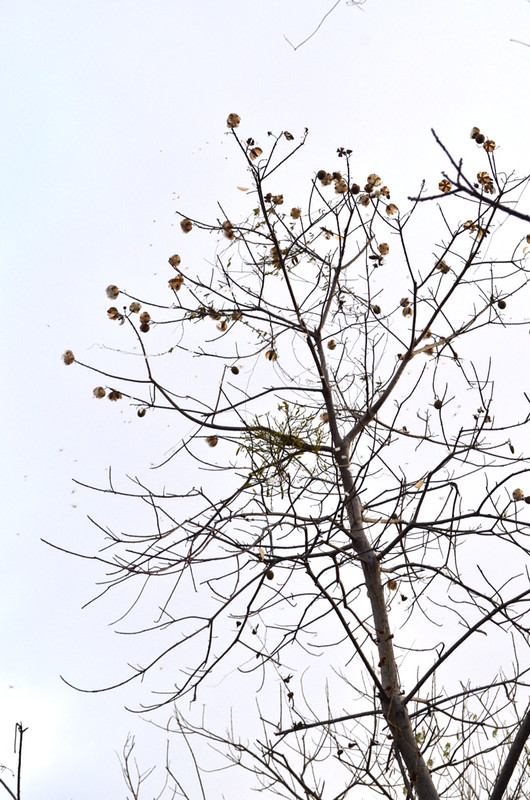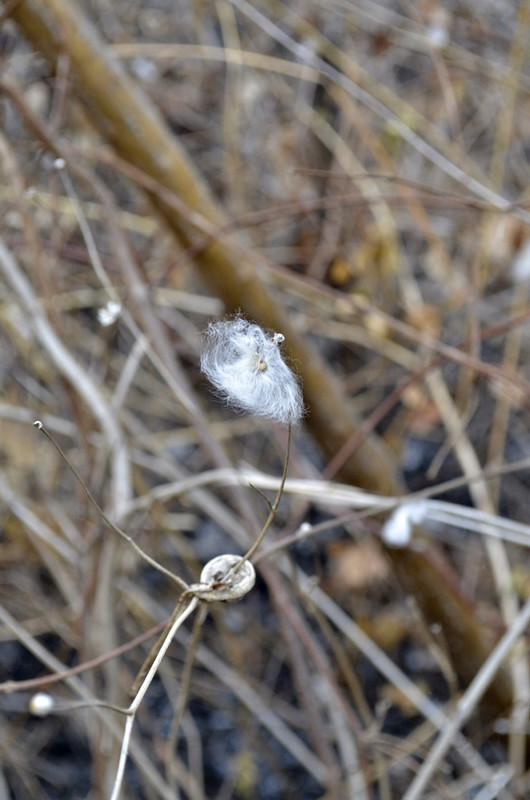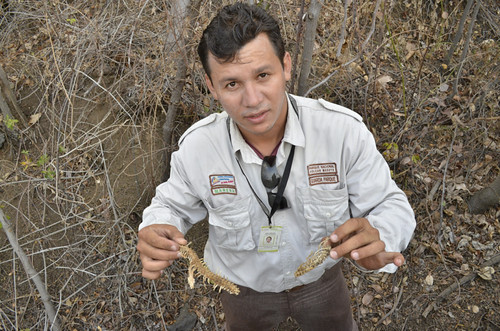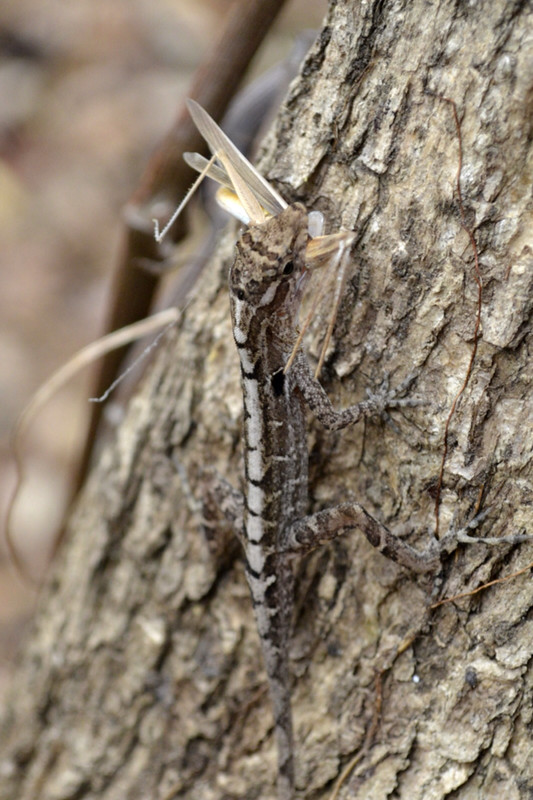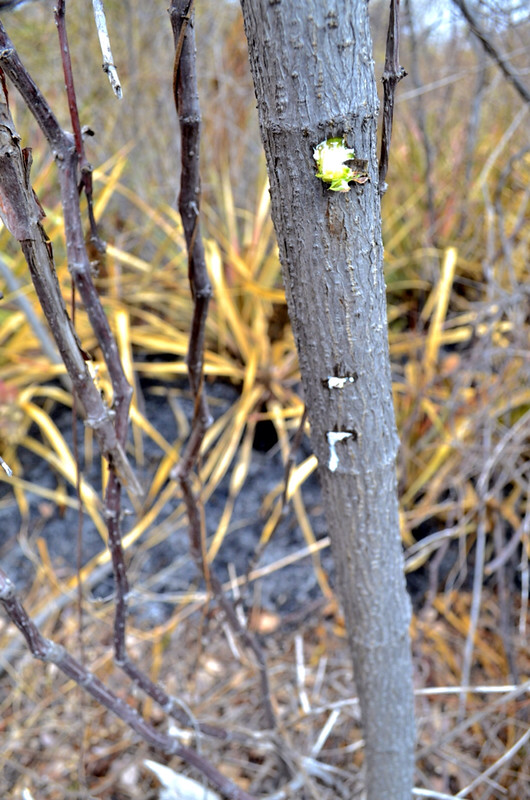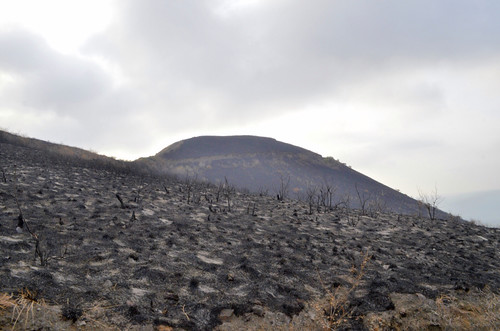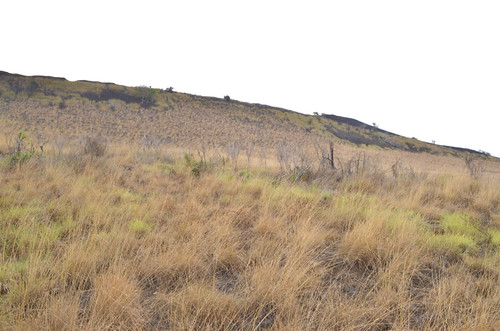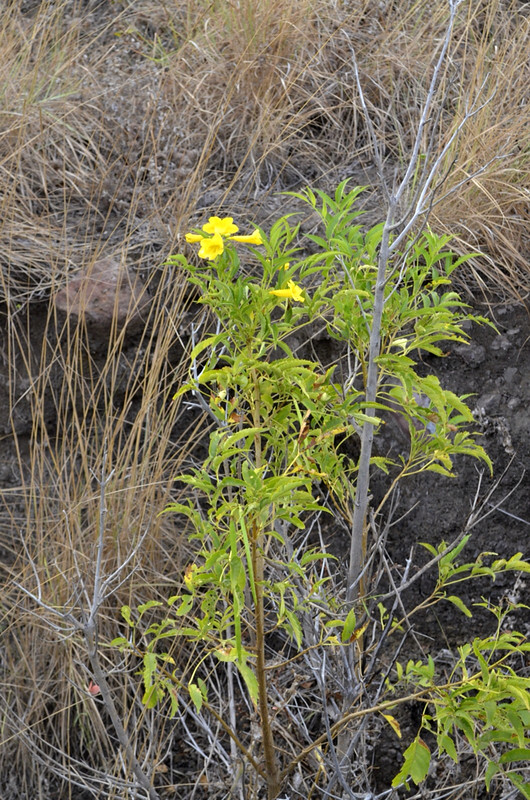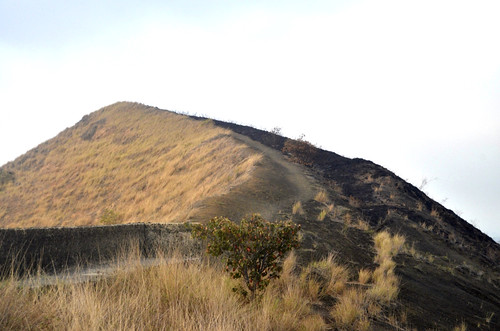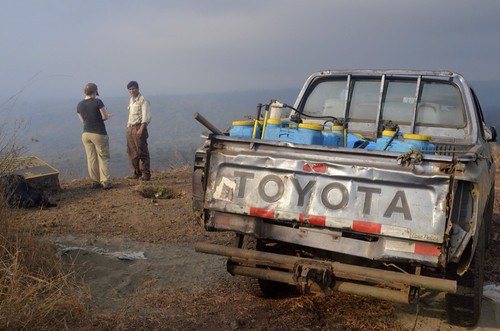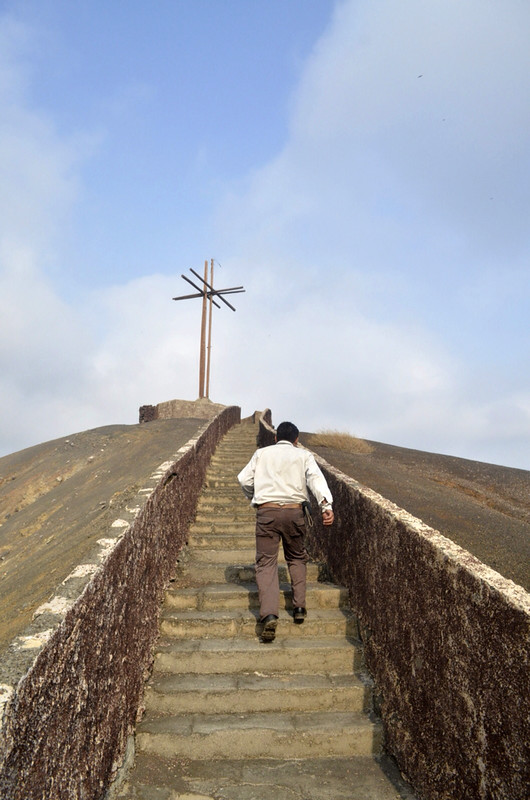When Paulette offered Colin and I the opportunity to join her in visiting the community living within Masaya Volcano National Park, we literally leapt at the opportunity - right into the back of the Mariposa pick-up truck. To bear witness to the birth of a project that mutually benefits the environment and local community, to see all of the potential for future growth, those are the moments that inspire Colin and I to do what we do.
To reach the community, we took a packed-dirt back road through the barrios. Some of these neighborhoods border the park and may also be fruitful partners for future efforts to benefit the park and its local communities. For example, Paulette may discuss with these families whether they have sufficient wood for cooking without relying on the supply within in the park. If they are running short, she can further investigate raising money to purchase more fuel efficient eco-stoves for the families most in need.
The back roads have a different flavor than the towns we have grown accustomed to passing through. The pace of life seems slower without the constant honking of the microbuses and we see few other vehicles. Paulette indicates points of interest: here, a giant Sabre tree with a majestic spread of branches and vines, there, a cemetery where she has seen far too many child-size graves.
As we near the community, we're treated to a tremendous view of the jungle that is Masaya Volcano National Park and the glint of the lagoon. Gonzolo, our driver, deftly negotiates the last treacherous stretch of road and we arrive at the community and Lake Masaya.
We immediately walk over to the lakeshore to find locals splashing and relaxing. Only a decade ago, this would have been an impossible sight. Until recently, the city of Masaya across the river had emptied their trash into the lake and you could barely see water for all of the garbage floating on the surface. Today, though there are still some remnants of Saint's Week celebrations, the beach is remarkably cleaner.
As we walk into the community, we're met by the wife of Carlos, a park ranger that Paulette had planned to chat with today. He happens to be working, but his wife with a toddler in tow leads us into the front yard of a home. Chair after chair of every variety is brought out among the dogs and chickens in anticipation of the meeting.
Soon we are introduced to Mariksa, the head leader of the community. She indicates that Manuel and Nixon, other leaders of the community are now arriving. Greetings and handshakes are exchanged by all and Mariksa begins to tell us more about their community of 13 families living along the lake.
When it comes time for Paulette's turn to speak, she deftly keeps the discussion open, sharing her ideas and inviting the community to offer their thoughts on what types of projects would be most helpful. She stresses that all decisions should be made by the community and determined by what they believe will be best.
When Paulette mentions the opportunity for sustainable tourism, the community responds enthusiastically. The two men nod vigorously at the prospect of leading guests around on horseback. Carlos' wife mentions nearby petroglyphs that might be of interest and that several members of the community are familiar with the birds and English, making them prime candidates for birding tours. Paulette offers the possibility that the Mariposa could fundraise and provide a boat for lake tours. Together, they plan out a perfect tourist activity, complete with lunch cooked in the village.
The conversation continues, exploring the possibility of homestays in the community and a reforestation volunteer project. Paulette highlights the opportunity to sell any artisanal products produced in the village and offers some worms from her organic composting project should the community want to start their own.
Early in the conversation, Paulette describes the potential to reduce the need for firewood with more efficient stoves, but they assure us they have enough dry wood to meet their needs and the community does not depend on wood from deeper within the park. Mariksa explains that this land is their life and they have lived here and looked after this natural area for long before it was declared a park. Despite their long standing role as stewards of the land, they have never been engaged in discussions by the director or officers of the park or offered any payment for all of the tourists passing through their backyard.
The meeting wraps up with plans for community members to visit the Mariposa and see if any projects there spark further ideas. An additional meeting with more members of the community is set for next week, to allow everyone in the community the chance to participate in planning. With only 13 families in the community, there is a potential role for every family in the tourism project. One family can lead the horse ride, another the boat tour, another can prepare lunch, another sell artisanal goods, etc.
With the project taking shape before our eyes, we hopped back into the truck. We share the space with foot-long dark brown pods, full of seeds to be started at the Mariposa and grown for the reforestation project. Just like that a Mariposa project is born and we drive into the sunset!
*apologies for any misspellings of names or mistranslations from Spanish
Paulette points out features of interest within the park.
The group heads down to the lakefront near the community.
Just a decade ago this lake was covered in trash.
Everyone shaking hands at the beginning of the meeting.
Mariksa, the head leader of the community.
Beautiful saddle.
A lovely lady from the village who happily showed us her kitchen.
Seeds from the community for the reforestation project.

